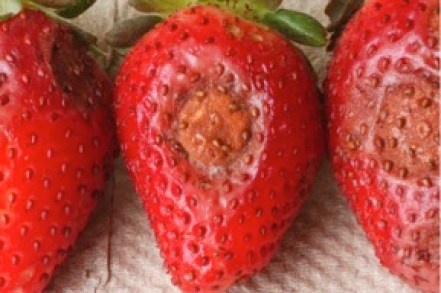If significant rainfall occurs in March or April of this year, strawberry growers and PCAs watching this crop might walk their fields with anthracnose disease in mind. Because the anthracnose pathogen, Colletotrichum acutatum, is almost exclusively spread by the splashing water provided by rain, the mostly dry weather of California springs keeps anthracnose from being an important production limitation in most sea- sons. However, if there are significant late spring rains, such as the ones predicted to fall this month, low populations of the pathogen could be stimulated to grow and spread, resulting in stem, flower, and fruit infections. Look for dark lesions on stems and fruiting stalks (Photo 1), though precise identification requires examination with a microscope. More easily identified are the oval to oblong, sunken, brown fruit lesions that can be covered with the orange colored spores of the pathogen (Photo 2).
Photo 1. Anthracnose lesions on strawberry petioles and runners.

Photo 2. Anthracnose lesions on strawberry fruit.
